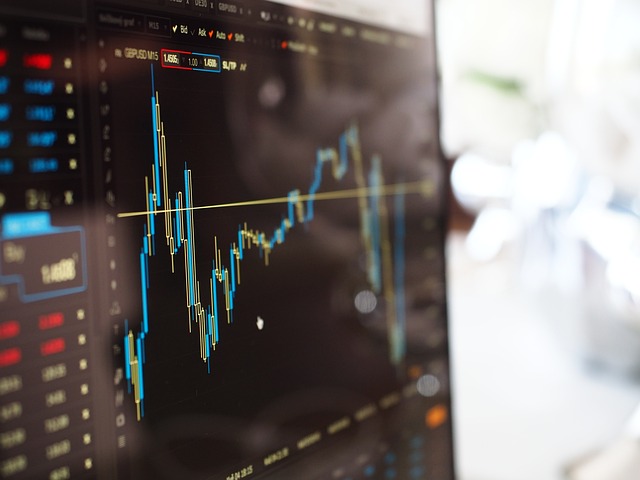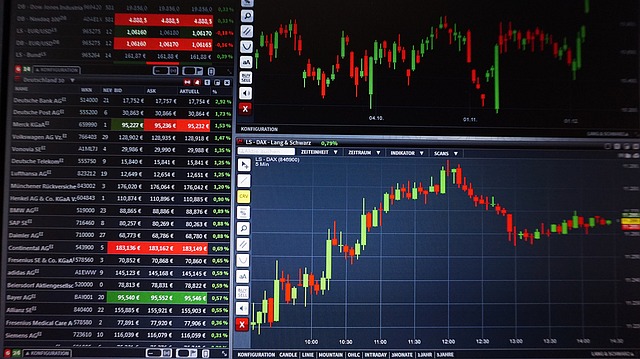The Rise of Trading Robots in Crypto Trading: A Comprehensive Guide
Author: Jameson Richman Expert
Published On: 2024-12-17
Prepared by Jameson Richman and our team of experts with over a decade of experience in cryptocurrency and digital asset analysis. Learn more about us.
The world of cryptocurrency trading has evolved dramatically over the past decade, with technological advancements playing a pivotal role in shaping the market dynamics. One of the most significant innovations in this space is the advent of trading robots, also known as algorithmic trading bots. These automated systems are designed to execute trades based on predefined criteria, offering a new level of efficiency and precision to traders. In this comprehensive guide, we will delve into the intricacies of trading robots, exploring their functionality, benefits, risks, and the future they hold in the crypto trading ecosystem.

Introduction to Trading Robots in Crypto Trading
Trading robots, or bots, are software programs that automate the trading process. They analyze market data, execute trades, and manage portfolios with minimal human intervention. The primary allure of these bots lies in their ability to operate 24/7, which is particularly advantageous in the volatile crypto market where opportunities can arise at any moment.
How Do Trading Robots Work?
At their core, trading robots work by following a set of rules or algorithms. Here's a basic breakdown of their operation:
- Market Analysis: Bots analyze market conditions using various indicators like moving averages, RSI, MACD, etc.
- Decision Making: Based on the analysis, the bot decides whether to buy, sell, or hold assets.
- Execution: Once a decision is made, the bot executes the trade automatically.
- Monitoring: Continuous monitoring of market conditions to adjust strategies in real-time.
The algorithms can range from simple rule-based systems to complex machine learning models that adapt to market changes.
Benefits of Using Trading Robots
The adoption of trading robots in crypto trading comes with several advantages:
- Emotionless Trading: Bots eliminate emotional decision-making, which often leads to irrational trading decisions.
- Speed and Efficiency: They can execute trades much faster than humans, capitalizing on fleeting market opportunities.
- Backtesting: Traders can test strategies on historical data before risking real money.
- 24/7 Trading: The crypto market never sleeps, and neither do trading bots.
- Diversification: Bots can manage multiple trading strategies across different cryptocurrencies simultaneously.
My Opinion: While trading robots offer numerous benefits, they should not be seen as a complete replacement for human traders. The nuanced understanding of market sentiment, which often involves reading between the lines of news and social media, remains a human forte.

Potential Risks and Drawbacks
However, trading robots are not without their pitfalls:
- Over-Optimization: Bots can be overfitted to past data, leading to poor performance in real-world conditions.
- Technical Failures: Software bugs, connectivity issues, or exchange downtimes can disrupt trading.
- Market Anomalies: Unexpected market events can render algorithms ineffective.
- Security Risks: Bots require access to your trading accounts, increasing the risk of hacks or unauthorized access.
My Opinion: The key to mitigating these risks lies in understanding the limitations of your trading bot and maintaining a balance between automated and manual trading strategies.
Choosing the Right Trading Robot
Selecting a trading robot involves several considerations:
- Strategy Compatibility: Ensure the bot's strategy aligns with your trading goals.
- Performance History: Look for bots with a proven track record.
- Customization: The ability to tweak parameters to suit your trading style.
- Support and Community: A robust support system and an active user community can be invaluable.
- Fees: Understand the cost structure, including subscription fees or profit-sharing models.
Real-World Examples and Case Studies
Here are a couple of examples:
- Gekko: An open-source trading bot that has been popular for its community-driven development and transparency.
- HaasOnline: Known for its advanced features and customization, it's used by many professional traders.
My Opinion: Real-world case studies often reveal that while some traders achieve significant success with bots, others face challenges due to improper setup or unrealistic expectations. It's crucial to approach trading bots with a realistic mindset.

The Future of Trading Robots in Crypto Markets
The future looks bright for trading robots:
- AI and Machine Learning: Bots will become smarter, adapting to market changes more dynamically.
- Regulation: As crypto markets mature, regulatory frameworks might evolve to include trading bots, potentially increasing trust and adoption.
- Integration with DeFi: Trading bots could play a significant role in decentralized finance, automating yield farming and liquidity provision.
My Opinion: The integration of AI with trading bots could lead to a new era where human traders and bots work in symbiosis, enhancing each other's capabilities rather than competing.
Conclusion
Trading robots have undeniably transformed the landscape of crypto trading, offering tools that can enhance efficiency, reduce emotional trading, and provide round-the-clock market engagement. However, they are not a panacea. The intelligent use of these tools, combined with a deep understanding of market dynamics and personal trading psychology, will dictate success in this ever-evolving market. As we look to the future, the synergy between human intuition and algorithmic precision might just be the key to unlocking the full potential of cryptocurrency trading.
For further reading on trading strategies and market analysis, consider visiting Binance or Coinbase for insights into current market trends and trading signals.